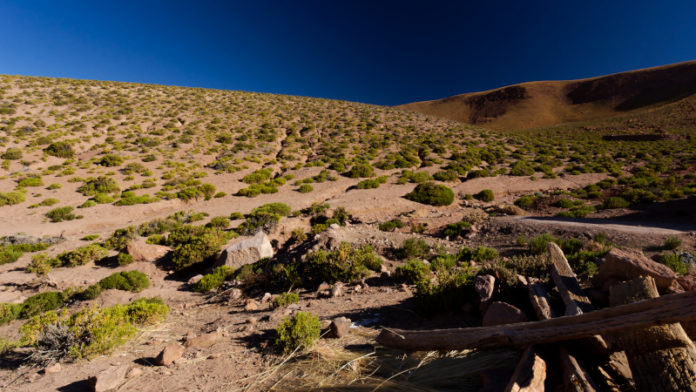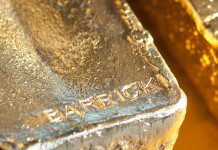
GOLD Fields has flagged a further potential delay in the commissioning of its Salares Norte project in Chile following severe weather in the second quarter and the continued negative effects of the Covid-19 pandemic.
Were the project to run three months late, commissioning only in June 2023, its capital expenditure would increase to as much as $940m from the originally scoped $860m, an increase of just over 9%, Gold Fields said today.
Based on this hypothetical timeline provided to shareholders, the ramp up in production would fall to 102,000 of gold equivalent ounces in Gold Fields’ 2023 financial year from the 200,000 oz that is currently scoped. A one month delay in delivery of Salares Norte (commissioning in April) would result in 2023 production of 165,000 equivalent gold oz in 2023.
Gold Fields warned last year that inflation would take the project’s capex to between $903m to $920m. This compares to today’s new capex guidance of $920m to $940m.
Once developed, the mine will produce average annual production of 450,000 oz of gold equivalent over the first seven years of life.
The Johannesburg-headquartered company also pushed back shareholder meetings to approve its proposed all-share takeover of Yamana Gold, a Canadian company. Gold Fields launched the takeover in May, proposing 0.6 Gold Fields share for each Yamana share.
Following a shareholder backlash to do with the potential value loss of the share exchange, the company sweetened the deal saying it would pay increased dividends and possibly list the combined unit in Toronto.
“At this stage we expect the shareholder meetings to take place in end October/early November 2022 with a potential closing of the transaction by the end of mid-November 2022,” said Gold Fields CEO, Chris Griffith in comments to the group’s second quarter and interim results announcement.
Shareholders were scheduled to vote on the takeover proposal on October 12 with circulars due for posting in the second week of September.
Gold Fields would not deviate from the proposed deal, despite the criticism. “We maintain the view that the acquisition of Yamana represents the best option to accelerate Gold Fields’ growth strategy and deliver long-term shareholder value,” said Griffith.
“Having explored both organic growth and bolt-on acquisitions, moving to completion stage of the transaction is the best opportunity to accelerate the next phase of the company’s growth in value,” he added. For it to fly, Gold Fields needs 75% of its shareholders to support the deal; while for its part, Yamana Gold needs just two-thirds of total shareholder approval.
Griffith was quoted by Reuters as saying the proposed transaction was still “a work in progress”. He told Reuters: “We are trying to get them (shareholders) to see the massive upside that exists in this deal. Work in progress is the best way to describe it.”
Shares in Gold Fields fell 21% since the announcement of the deal on May 30 compared to a decline of 9.5% for AngloGold Ashanti over the same period, but falls of 34% and 20% for Newmont Mining and Barrick Gold respectively.
Merging with Yamana would propel Gold Fields to the top three to four largest gold producers in the world with production of no less than 3.2 million ounces annually with potential to extend and increase output over time.
Power dividend
Gold Fields said production and cost guidance for the remainder of the financial year was unchanged at 2.25 million to 2.29 million oz in production at an all-in sustaining cost (AISC) of between $1,140/oz to $1,180/oz, excluding the group’s stake in Ghana miner, Asanko Gold.
This follows a strong showing for the first half of the year to end June in which production came out at 1.2 million oz, a 9% year-on-year increase which was produced at an AISC of $1,148/oz, a 5% increase.
The outcome for shareholders was a 16% year-on-year increase in normalised earnings for the six months of $498m, equal to 0.56 US cents a share.
In an effort to show itself attuned to paying value out to shareholders, the Yamana deal notwithstanding, the group declared a 300 South African cents per share interim dividend – 43% higher year-on-year – representing the upper end of its 25% to 35% of normalised profit dividend policy.










